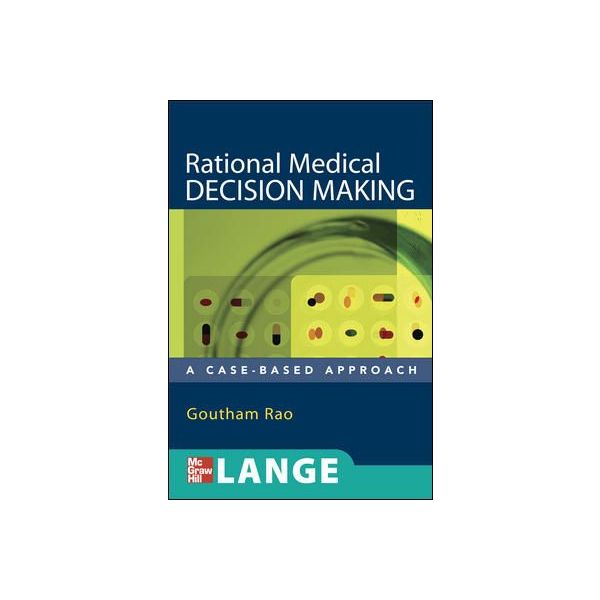RATIONAL MEDICAL DECISION MAKING
All the key principles of medical decision-making-in one compact, case-based guide
"The book provides a comprehensive overview of many core principles in research design and analysis. It is logically organized, with clear learning objectives at the beginning of each chapter and pertinent examples to illustrate key concepts. The author does a wonderful job of simplifying a subject that has caused much confusion for many medical students and physicians....This is a book that I would enthusiastically recommend to other medical students. 5 Stars!"--Doody's Review Service
Rational Medical Decision Making: A Case-Based Approach is a hands-on text that clarifies the process of evidence-based medical decision making like no other source.
Following the trusted LANGE format, this portable volume is ideal for learning the fundamentals of evidence-based medical practice and skills. Whether you are a student, resident, or a clinician, here is where you'll find all the right tools-including case studies, learning objectives, and self-assessment exercises-to take your decision making skills to the next level.Features
Full-spectrum coverage, from basic statistics, medical literature interpretation, and statistics and data application, to different types of research methodologies Case-based orientation in each chapter, featuring cases designed to highlight the important principles discussed in that chapter Focus on learning critical evidence-based medicine concepts, such as Positive Predictive Values, Number-Needed-to-Treat Statistics, Pre Test Probability, Sensitivity and Specificity, and moreEngaging discussion of research methods in the context of diagnosis- and therapeutics-centered studies An overview of the construction and evidentiary basis of Clinical Practice Guidelines, with a look at their definition, purpose, and use in aiding patient care decisions “Anatomy of a Research Article” chapter that goes beyond the interpretation of medical literature to describe the process through which articles are published| Author | RAO |
|---|---|
| Table Of Content | 1 “A History Lesson” • History of first medical papers• How and why the medical literature has grown To provide skills in searching electronic databases and other resources for the best available evidence.• Searching Medline• Searching the Internet for the best available evidence To provide an overview of the structure of most original medical research articles and to describe the process through which articles are published • Principles of peer review, editorial freedom and author confidentiality4 A Statistics Primer • Basic, descriptive statistics• Samples & populations• Principles underlying all tests of significance To provide an overview of how doctors think about diagnosis, how diagnostic tests are developed and evaluated, and how studies about diagnostic tests should be evaluated • Developing and assessing a new diagnostic test6 Studying Therapies • Elements of “sound” clinical questions• Analysis of results of new therapies (p values, confidence intervals, etc.)To provide an overview of how doctors and patients think about risk and prognosis and how risk and prognosis are systematically evaluated • Study designs used to assess risk• Measures of prognosis (i.e. survival curves, etc.) To provide an overview of the principal characteristics and usefulness of qualitative and quantitative (meta-analyses) systematic reviews. • The Cochrane Collaboration• Interpretation of systematic reviews • Definition and purpose of decision analysis10 Clinical Practice Guidelines • Definition and purpose of clinical practice guidelines• Use of guidelines to aid in patient care decisions To provide an overview of qualitative methods to address questions of importance to physicians and patients• Summary of qualitative research methodsAppendix Estimate of total number of pages excluding index: 220 |
| Publish Date | 17 Nov 2006 |





